

Death Valley, Devil's Golf Course, Badwater Basin, Coffin Peak: the location names of America's hottest and driest region sound truly terrifying! Come with us to Death Valley National Park, and find out if dark forces are at work here.
| Location: | Near Ridgecrest, California, USA |
| Size: | 13,628 km² |
| National Park since: | October 31st, 1994 |
| Visitors: | About 1.7 million visitors annually |
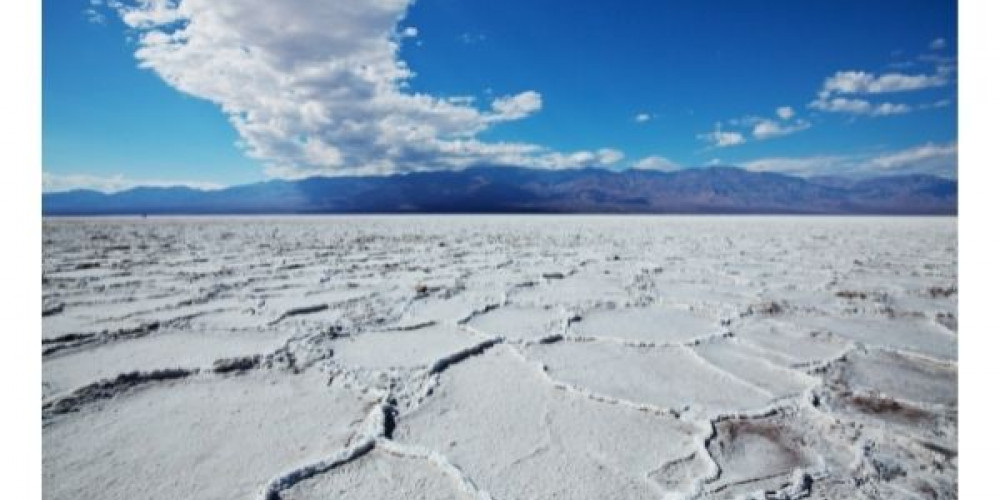
Death Valley is flat land in southern California and one of the most extreme places on earth: the desert landscape is not only the hottest and driest but also the lowest point in the United States!
President Herbert Hoover declared Death Valley a National Monument in 1933. The national park was established on October 31st, 1994. Within the park are two valleys enclosed by several mountain ranges: the world-famous Death Valley and the smaller Panamint Valley.
You can't get hotter than this: Death Valley National Park experiences a subtropical hot desert climate with long summers and short, mild winters. In fact, temperatures often climb so high in the summer months that the valley is the hottest place in the United States.
Death Valley is also extremely dry because it lies in the middle of four large mountain ranges. Humid air masses from the direction of the Pacific are pressed upward along the Sierra Nevada and Co. mountain ranges, cool down and condense. Only a few precipitations still reach Death Valley.
Valley of records
The highest temperature ever recorded in the US was 56.7 °C on the afternoon of July 10th, 1913, by the United States Weather Bureau at Greenland Ranch in Furnace Creek.
Badwater Basin lies 85.5 m below sea level and is the lowest point in the USA.
There is only sand and heat in the desert? No way! In Death Valley, you'll find a variety of fascinating highlights that you won't find anywhere else.
Located at 85.5 m below sea level, Badwater Basin at the southern end of Death Valley is the deepest point in the USA. Don't be surprised if you see mostly a white salt marsh from the shore of shallow Badwater Lake. Depending on the weather or season, the water level varies greatly. Either way, the scenery is simply breathtaking. PS: If there is plenty of water, you can even go boating on the lake.
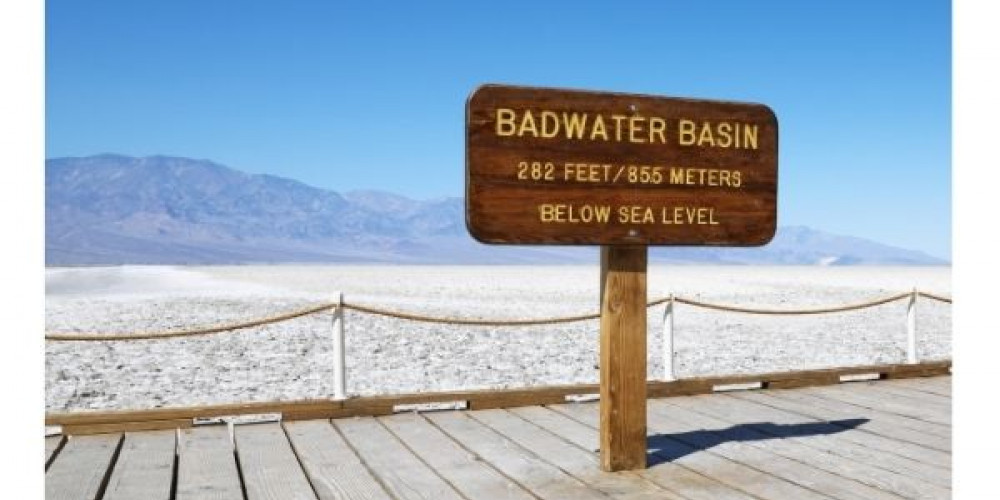
Spectacular shapes and even more fascinating colors: Artist's Palette lives up to its name! The colorful slope section at the Black Mountains shines due to various metals in the rocks, which glow in all possible shades – from orange, pink, and brown to green and turquoise. Tip: The colors of Artist's Palette shine most beautifully in the late afternoon.
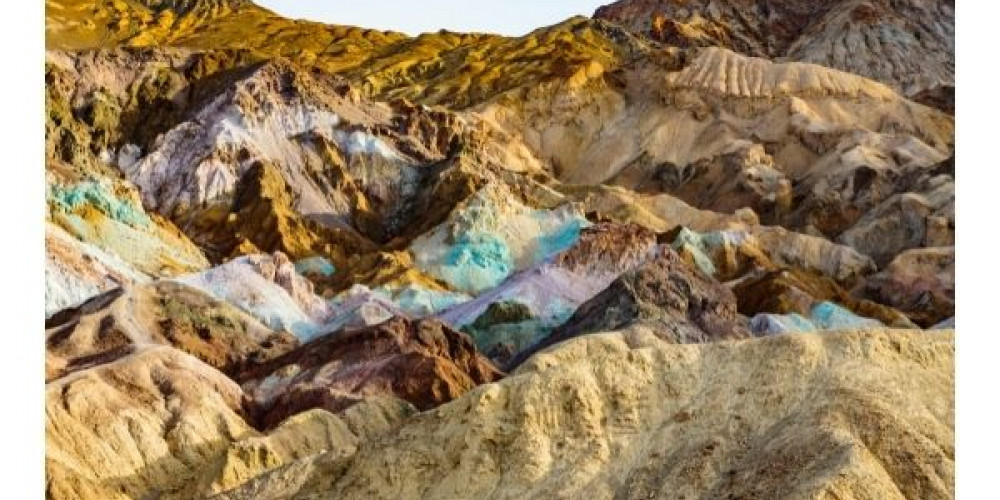
What a terrifying name! Known as Devil's Golf Course, it's a huge field of sharp salt crystals that stretches south of the town of Furnace Creek. You should have no trouble finding the area, as it's right off the road to Badwater. Tip: If you dare, you can also walk onto the spiky field.
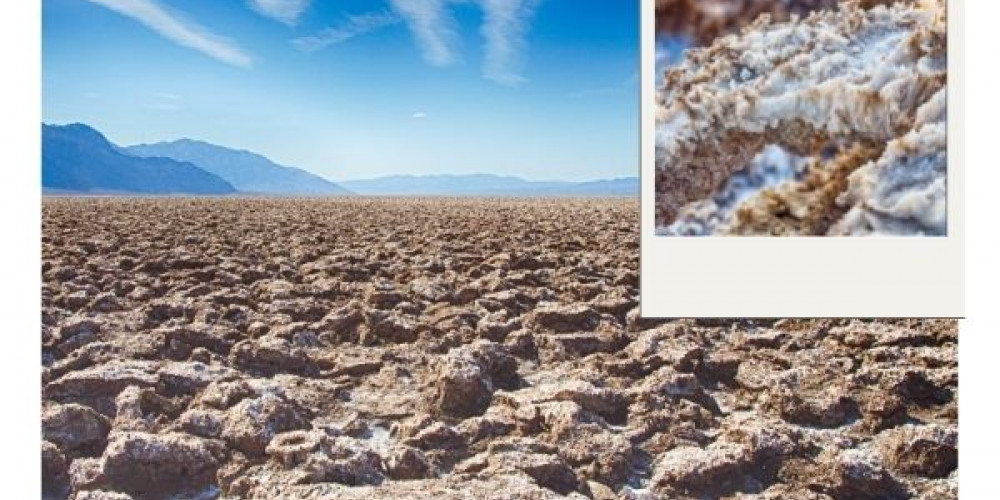
A surreal landscape in gold, orange and brown: that's how you can describe the panorama at Zabriskie Point. From this popular observation point, you'll have a magnificent view of the valley in front of you, all the way to the Panamint Mountains in the distance. If you're in the mood for some exercise afterwards, you can head out on the 12-kilometer hiking trail that starts at Zabriskie Point. Tip: You can see the most brilliant colors in the morning or late afternoon.
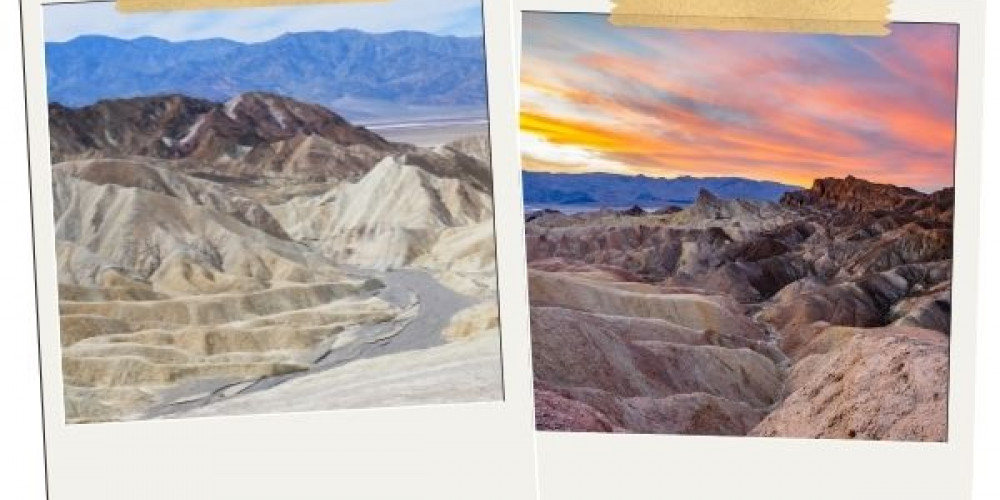
For a long time, visitors and researchers wondered what the mysterious wandering rocks of Racetrack Playa were all about. As if by magic, they move through a huge bed of dried mud, leaving behind deep tracks. Today it is clear that the rocks, weighing up to 350 kg, slowly glide on a millimeter-thin film of ice. Don't miss this unique natural spectacle!
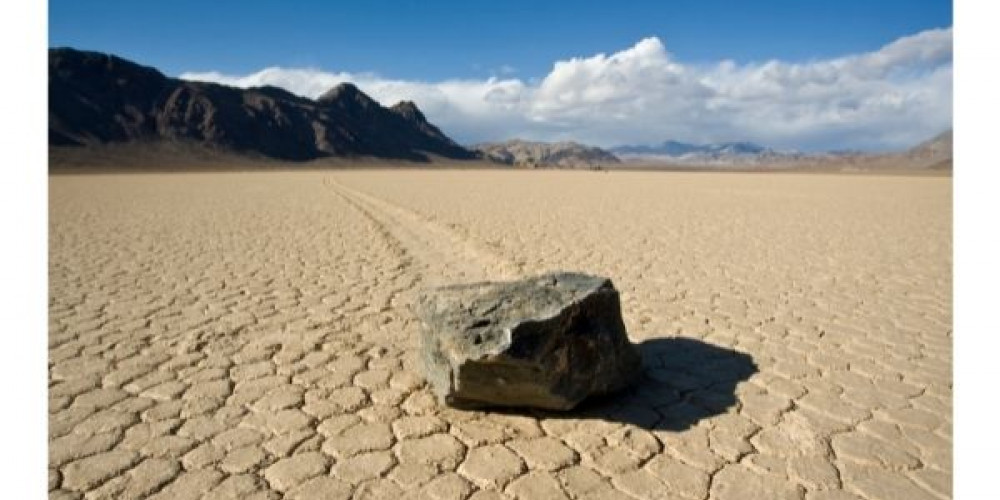
If you suddenly hear a strange humming sound in the middle of the desert that sounds like a propeller plane in the distance, you're probably at the Eureka Dunes. The "singing dunes" phenomenon of Death Valley is caused by the movement of sand grains sliding down the dune.
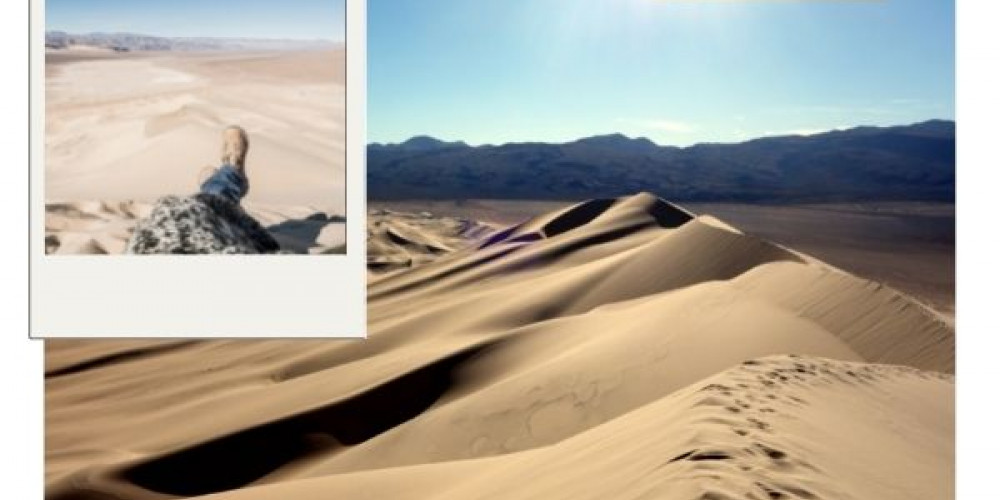
An artist could not have created a more beautiful piece! Dante's View is located a bit off the beaten track on the northern slope of Coffin Peak in the Black Mountains, but it's worth the trip! From the viewpoint at 1,699 m, you have one of the most beautiful panoramic views over Death Valley.
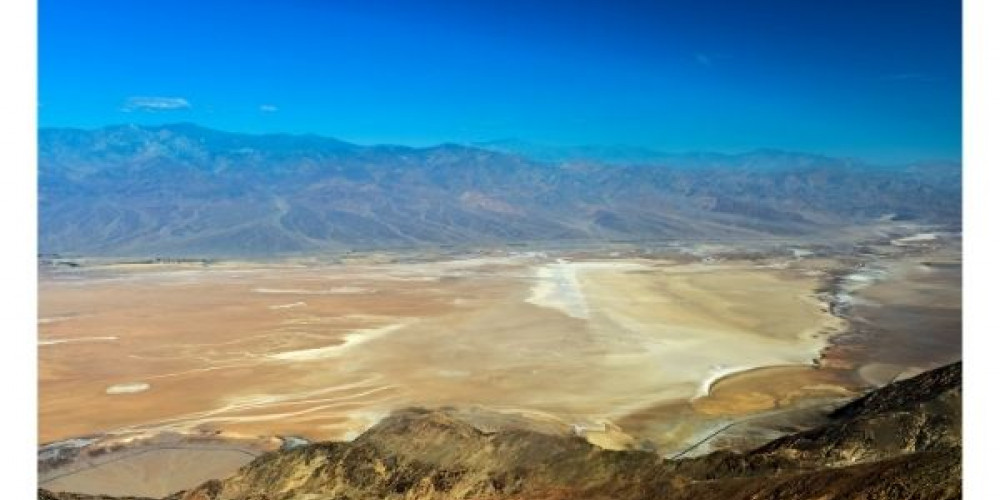
Telescope Peak's 3,366-meter summit is the highest point in Death Valley and offers a spectacular contrast to the low-lying Badwater Basin. At its peak, the giant on the western edge of the national park is covered with snow for about eight months a year.
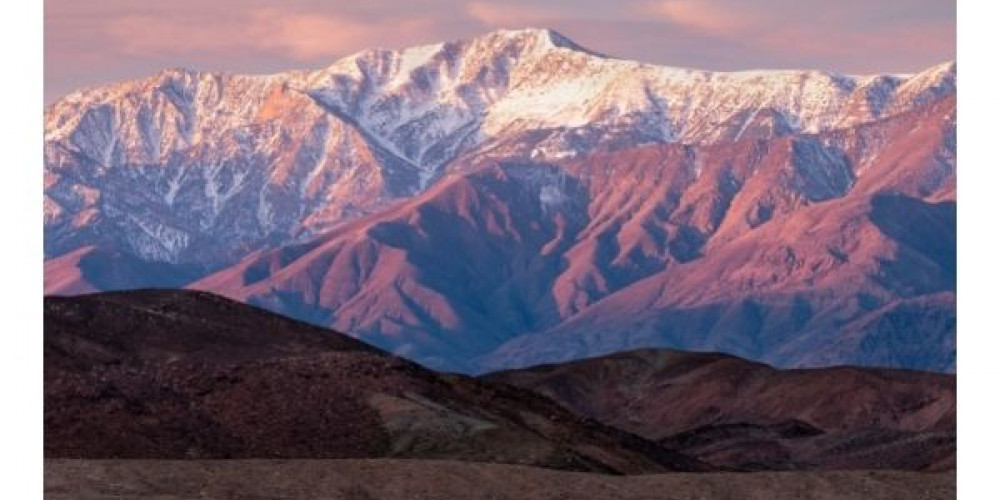
If you want to explore the "Valley of Death," you have the following options:
There is a small public airport about a kilometer west of Furnace Creek. In fact, Furnace Creek Airport (DTH) is the lowest-altitude airport in the United States. Most visitors, however, arrive at the nearby Las Vegas International Airport and rent a car there for a tour into Death Valley. It takes about two hours to drive from Las Vegas to Furnace Creek.
Don't forget
If you are not a US citizen or green card holder, then you will need a US visa or ESTA to enter the United States.
The best and most flexible way to visit Death Valley is with a rental car. For example, you can take a road trip from Los Angeles in California to Las Vegas in Nevada and drive through Death Valley.
For your exploration, you can use several roads that lead through the valley. California Highway 190 crosses the national park from east to west and also takes you to the town of Furnace Creek. In addition, several state routes run east, west, and south of the valley.
There are no public transportation connections to Death Valley, but you can join group tours offered by private operators.
From Las Vegas, you can join a guided day tour to Death Valley. Prices start at around € 130. But you can also join private tours and themed tours, such as a Ghost Town Tour or multi-day round trips through America's West.
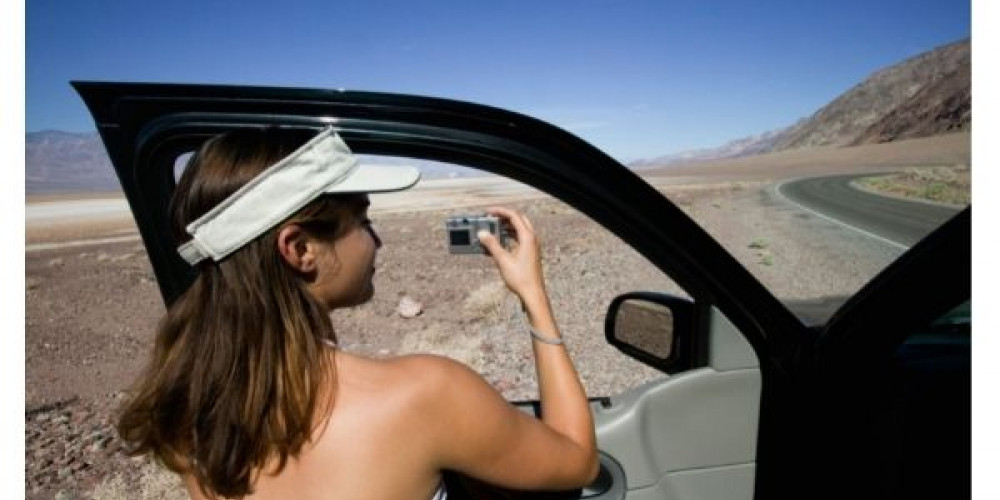
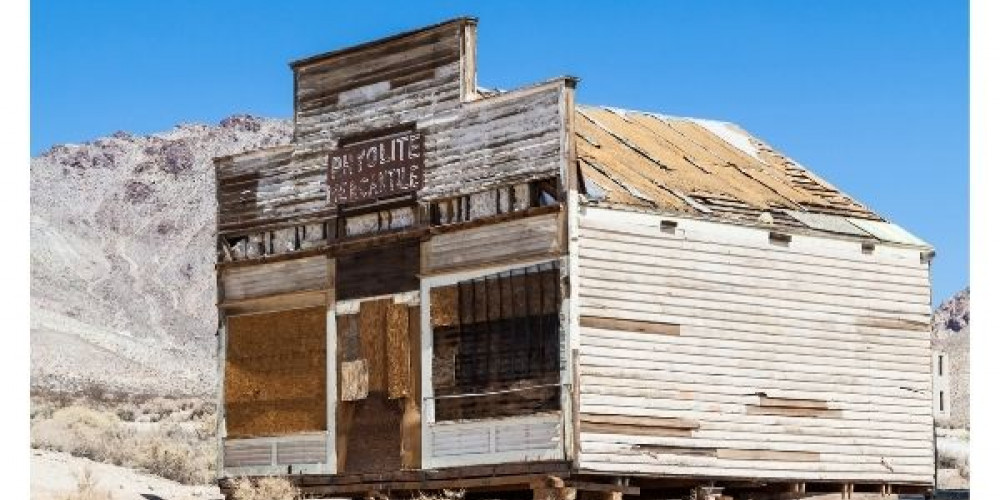
How did a place with such extreme living conditions come to be? Marine sediments that are 800 to 1,200 million years old prove that there was once an ocean in the area of today's Death Valley. Plate tectonic shifts (the Farallon plate dipped under the North American plate) pushed the area upward. This also caused the volcanoes and mountain ranges in the western USA to pile up.
Over many millions of years, erosion and deposition of sediments created the Death Valley plain between the mountain ranges. After the last ice age about 20,000 years ago, the plain was filled by the huge Lake Manly. When it dried up, a high concentration of salt was left on the ground. Due to ongoing geological processes beneath southern California, the mountain ranges to the east and west of Death Valley are moving away from each other, steadily expanding the valley.
Although Death Valley may seem like a hostile place to live, it has long been inhabited. The Timbisha tribe, also known as the Panamint Shoshone, has lived in the valley for at least the last millennium.
European settlers came to the region in the 19th century during the Gold Rush. They also gave the valley its current name, Death Valley. In 1849, a wagon train of gold seekers lost their way here in search of a new, shorter route to the mines in California. Thirteen of the settlers died under the blazing heat.
In the 1850s, several gold and silver mines were established in Death Valley, and in the 1880s, mainly borax was mined. For this purpose, settlements were built in the desert amidst the difficult climatic conditions. Some were abandoned when the mines closed and became ghost towns, but some are still inhabited today.
You can visit these settlements in Death Valley:
The man-made oasis town of Furnace Creek in Inyo County is home to Death Valley National Park headquarters, the visitor center, a museum, a golf course, some tourist facilities, and National Park Service public campgrounds.
The place was founded in 1883 by the William Tell Coleman Borax Company under the name of Greenland Ranch. Since 1891, it has featured the weather station where the highest air temperature in the US to date was recorded in 1913.
Native Americans continue to live in Death Valley to this day. The reservation of the Timbisha Shoshone tribe was established in 1982 and is located near Furnace Creek. The tribe currently still has about 300 members.
No, the castle in the Grapevine Mountains of northern Death Valley in the middle of the Death Valley desert is no mirage! Scotty's Castle, the two-story Mission Revival and Spanish Colonial Revival style mansion, was named after gold prospector, artist, and impostor Walter E. Scott. The latter convinced Albert Mussey Johnson, a Chicago millionaire, to invest in a gold mine in Death Valley in the early 20th century. Johnson and his wife Bessie built the castle as their winter home.
The settlement of Amargosa, also known as Death Valley Junction, can be found in the eastern part of the national park at the intersection of California State Route 190 and California State Route 127. Although fewer than 20 residents live here permanently, there is a restaurant and the Amargosa Opera House and Hotel, where resident Marta Becket presents dance and mime shows since the 1960s.
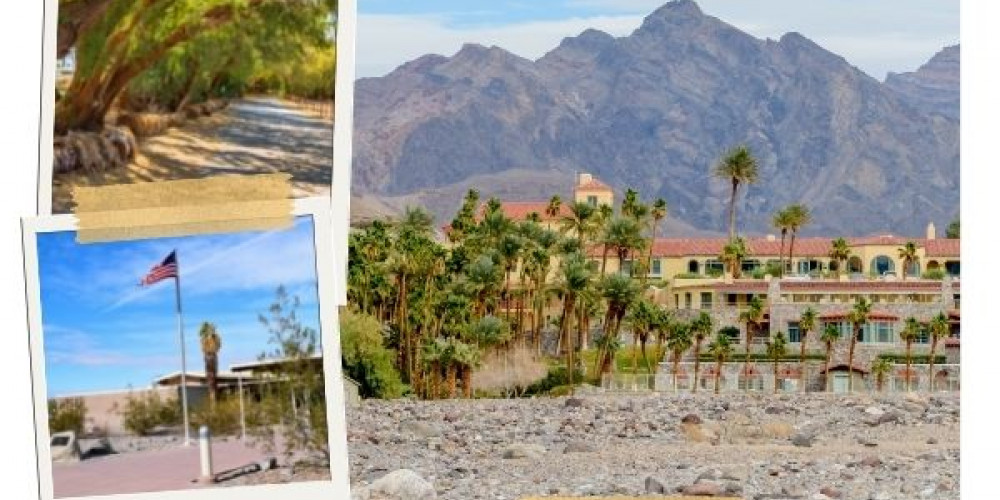
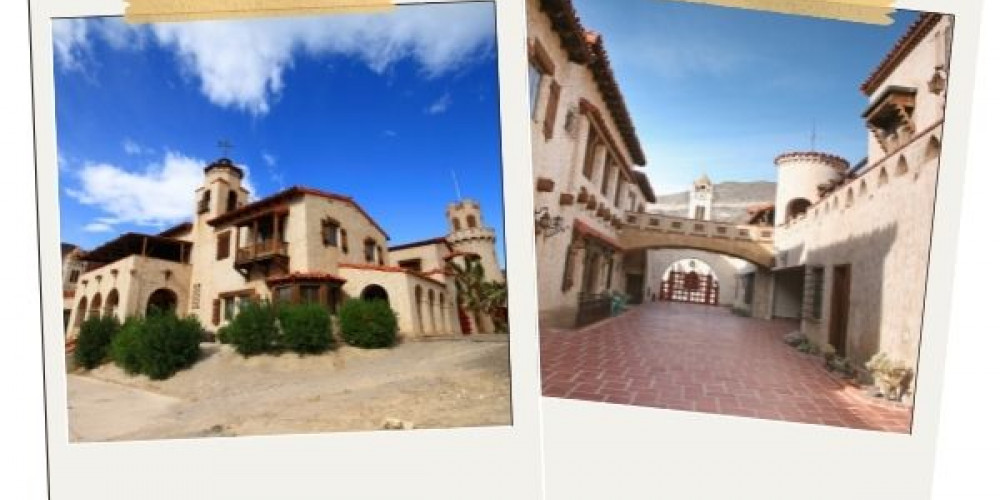
Animals in Death Valley must be true survivors, but there are more species in Death Valley than you probably realize. Some of them you can't see anywhere else in the world.
Several species of fish even live in the harsh conditions and salty waters of Death Valley. The most famous of them is the Death Valley pupfish, which shimmers in the most beautiful colors. You'll only find this rare species in two isolated places in Death Valley: Salt Creek and Soda Lake. There, the fish live in water that is four times saltier than the oceans and reaches temperatures of up to 47 °C.
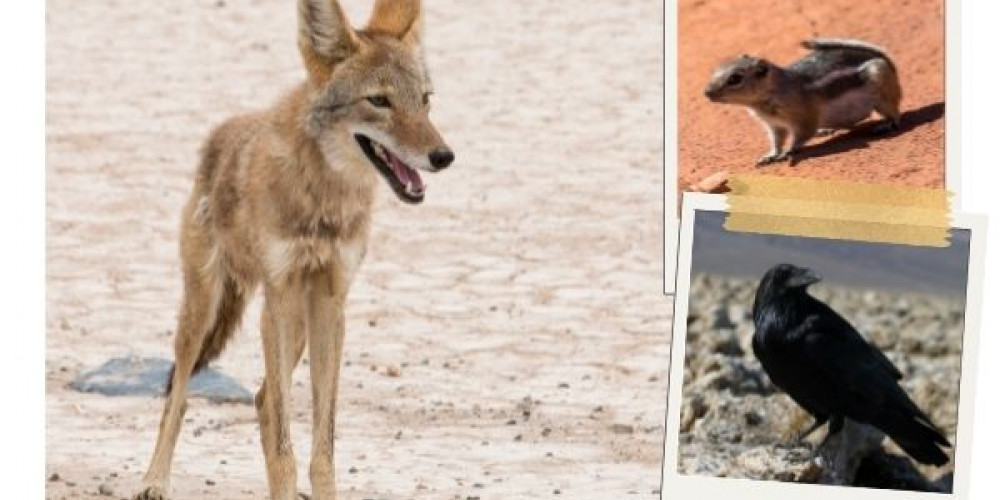
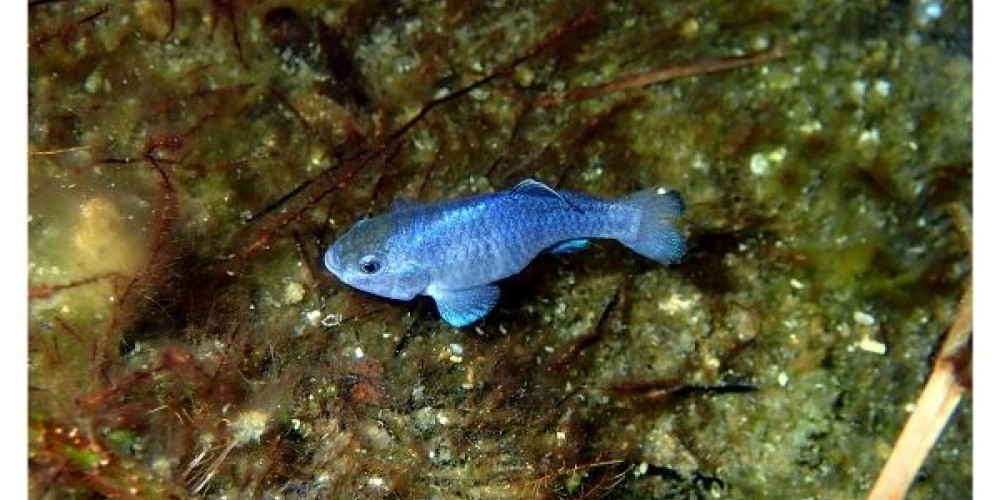
Death Valley offers a surprisingly wide variety of plants. In the higher elevations near the mountain ranges, you'll find plants like creosote bush, desert holly, and mesquite, and where the terrain gets lower and flatter, blackbrush, Joshua tree, pinyon-juniper, and various pines thrive.
A particularly impressive spectacle is offered to you when wildflowers transform Death Valley into a sea of color. The robust seeds of the flowers can survive several years in the ground and only bloom after heavy rainfall. That's why this highlight is very rare and fleeting. But if you are lucky enough to be in Death Valley just then, it will leave a lasting impression!
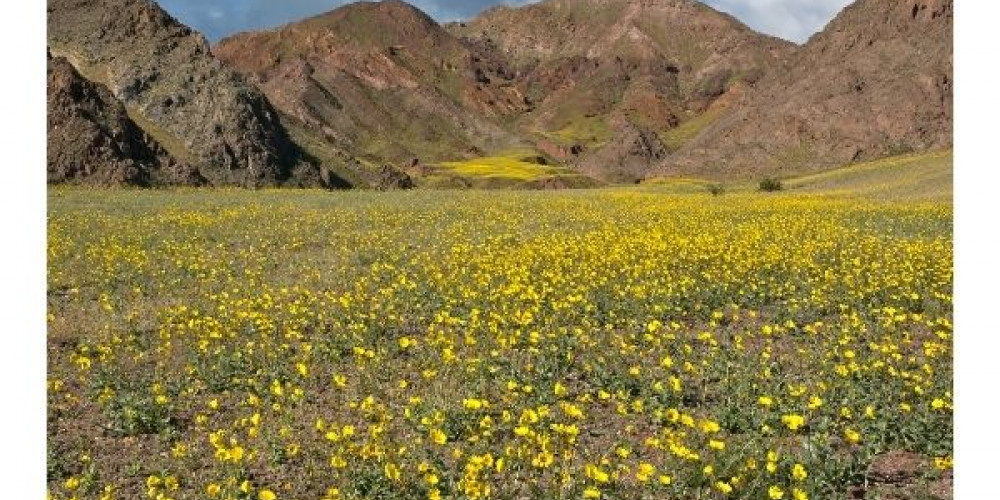
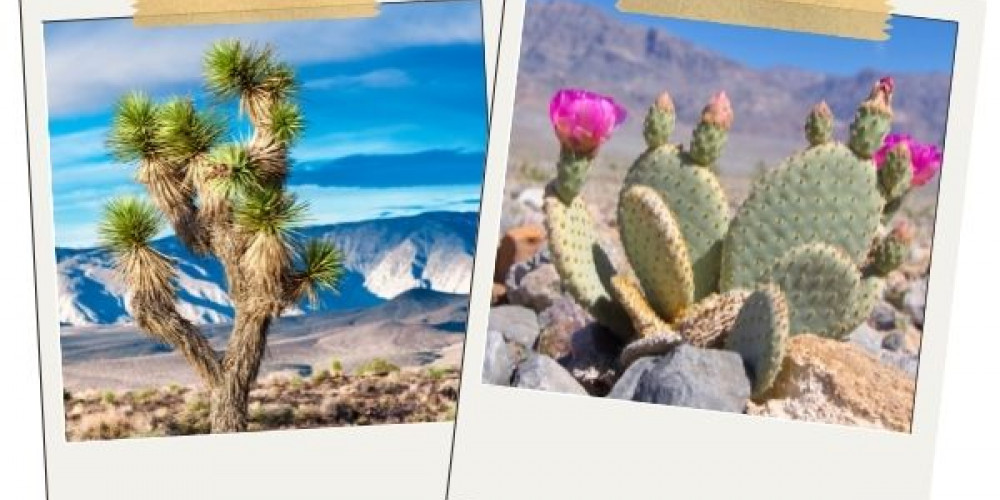
Do you want to document your adventures in the desert for your Instagram followers? Then be sure to visit these five places:
You probably haven't heard these exciting facts about Death Valley:
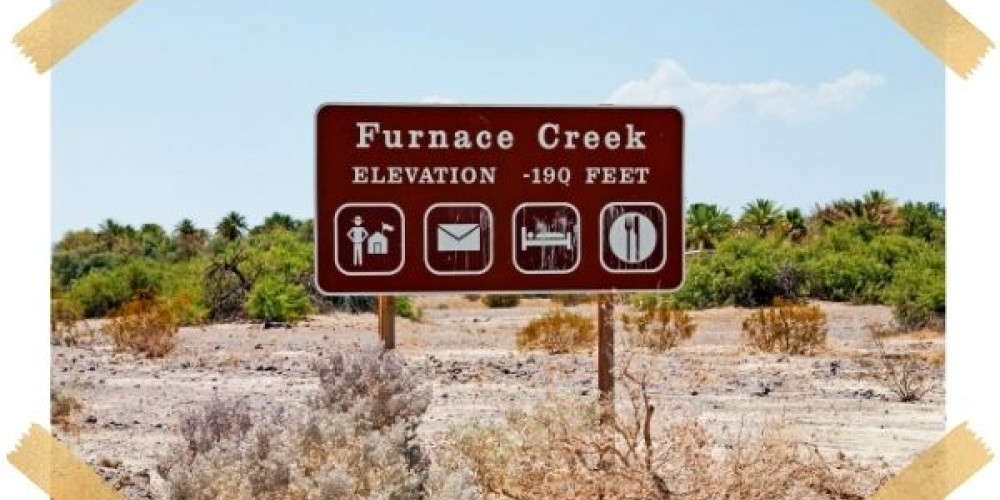
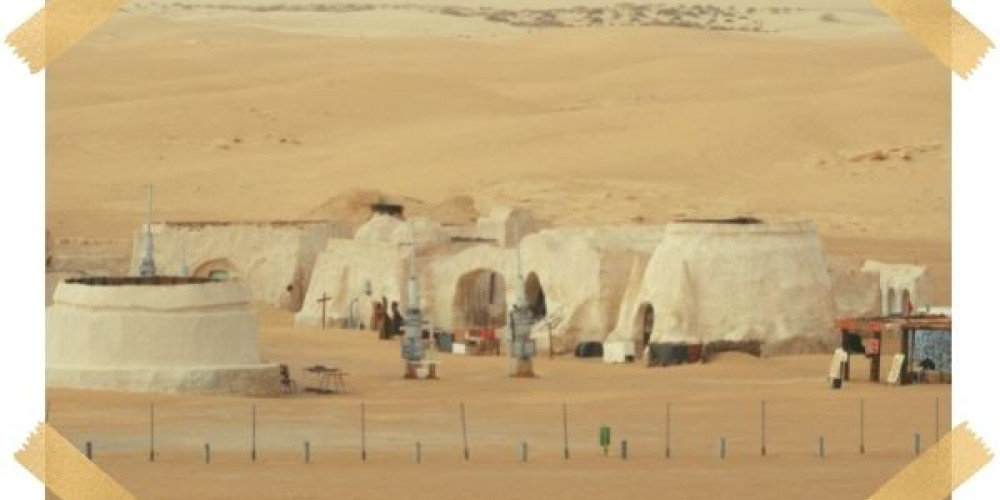
Still don't feel like you know enough about Death Valley National Park? Check out our FAQ to get the answers to your questions:
Death Valley National Park covers 13,650.30 km². It is the largest national park in the USA outside Alaska.
To drive into Death Valley National Park, you must purchase a permit. This costs $30 per car, truck, or van. Motorcyclists pay $25, and pedestrians or bicyclists pay $15. The ticket is valid for one week from the date of purchase, and you can enter and exit the area as many times as you like.
Admission is free on some US holidays, such as Martin Luther King Day and Veterans Day.
Yes, if you are in California for a longer period of time, the "Death Valley Annual Pass" for $55 may be a good deal for you. It is valid for twelve months from the date of purchase. Seniors 62 and older can purchase the annual pass for $20.
Another option is the "America the Beautiful Annual Pass." It costs $80 and includes all parks managed by the National Park Service as well as the National Forests. It is valid for twelve months from the date of the first visit.
When taking a trip to Death Valley, always carry plenty of water (at least 4 liters), sunglasses, sunscreen, and headgear. If you feel dizziness or headache, drink something and avoid physical exertion.
Always stay on the paved roads if you are traveling in a private or rented vehicle.
You want to spend the night in Death Valley? The town of Furnace Creek is the first address for hotels, but also campgrounds and restaurants. Other accommodations can be found in the towns of Stovepipe Wells and Panamint Springs.
Nowhere in the world will you find as much variety and contrast as in the United States. How about a boat trip through the swamps of the Everglades in Florida or an icy adventure between the glaciers of Denali National Park in Alaska? Or have you always wanted to see the giant sequoias in California's Yosemite National Park?
Wherever you go, the amazing US National Parks are sure to take your breath away!